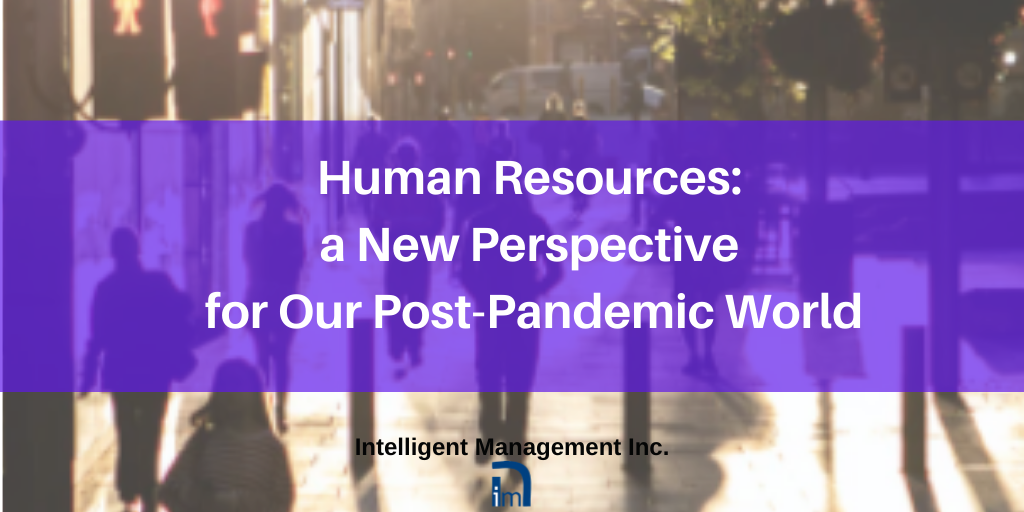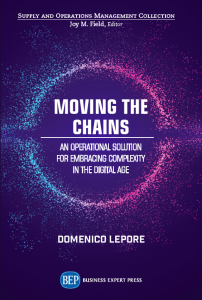
We cannot know when, exactly, but a moment will come when we will move forward beyond the lockdowns. There are those who long to “go back to normal. But that would mean to squander the unique opportunity the global crisis has given us: to usher in a level of transformation in the way we work and the way our human resources contribute to the goal that is for everyone’s benefit.
The tragedy of COVID-19 is giving us the chance to shift our perspective. Just because something was normal does not mean it was the best. It was simply familiar. Introducing AI and robots is only part of the puzzle, and while tools like ‘Slack’ can be helpful, relying on them to manage an organization is foolhardy.
The challenge and the opportunity facing leaders today is to organize the work of people, or human resources, in a way that enhances:
- Human intelligence
- Human aspirations
- Human connection
In other words, how can we fully employ all of our human resources in the broadest sense, while at the same time addressing control and accountability?
To achieve this, nothing less than transformation will do.
Why do we work?
If we want to move forward and not simply repeat things in the way they were done before, we have to ask the right questions. So why do we work at all? This question is even more pertinent with increasing conversations about a universal basic income. Naturally, the vast majority of people needs to earn a living. People bring with them a set of abilities and aspirations so they seek employment in organizations. What is a an organization? It is an entity with a declared goal. To achieve this goal requires a series of activities to be carried out in a synchronized way, in some cases on a repetitive basis and in others on a one-off basis. These activities are carried out by a set of resources – by people who have the abilities to do so and by physical resources. All these resources are by their nature limited (finite).
How do we control and make accountable the people who come to work?
In order to achieve its goal, any organization has to be “organized” to avoid chaos. Traditionally, this has meant creating a vertical hierarchy and dividing people up into “departments”. The assumption is that by dividing people up in this way it is easier to control them. This leads to another assumption – that bosses have to assess employees’ performance on an individual basis. It also leads to departments having their own budgets and targets. Once again, the assumption is that individual targets and incentives will benefit the whole. These assumptions can easily be invalidated by understanding what matters most: enabling speed of flow. This can only happen when resources are correctly interconnected and interdependent, not separated in silos or departments. Not only is this a more intelligent way to work, it is also what successful digital transformation requires.
Managing interdependencies in order to enable speed of flow of goods, services, communication and innovation MUST be is the focus for leaders in organizations today. This means abandoning a world view where separation of the parts is considered effective. That may have been the case up until about 50 years ago. With the levels of complexity and the speed of change that characterize our contemporary world, leaders need to catch up fast and find adequate models and methods for management.
A new perspective on control
Leaders and managers who developed their careers in traditional organizations must have experienced some level of panic when they suddenly had to deal with a workforce that is distributed and working from home. How do you control people in this way? How do you know they are doing what they should be doing? How do you exert leadership at a distance when people are engaged in remote work?
What we at Intelligent Management have come to develop over the years is the vision of an organization based on:
- Competence and cooperation
- Work that is meaningful and shared
- Activities that are synchronized to achieve the goal
- A hierarchy of responsibilities that is not a vertical pyramid
- Real empowerment (alignment of responsibility with authority)
This goes well beyond a vision. It comes with the science, method and tools to put it into operation and it has been continuously refined over the many years of implementations.
Systemic thinking is crucial because it focuses on the interdependencies among people. Interdependencies allow for sustainable growth, using the resources available in the most productive and effective way.
Humans have many more resources than we are currently tapping into. The role of leadership becomes very clear – designing and managing the interdependencies to allow those resources to achieve the goal together in the most effective and satisfying way.
We look forward to a future of work where human intelligence drives the kind of transformation where everyone wants to take part. It can be done. The science exists. There is a method, tools and even some technology as a support. It’s up to us to choose.
Contact: intelligentmanagement@sechel.ws
SCHEDULE AN INTRODUCTORY CALL WITH US







Leave a Reply